Mastering the art of reading banjo tabs, also known as tablature, is an essential skill for those embarking on their banjo-playing journey. Unlike conventional musical notation, banjo tabs offer a clear visual representation of the instrument’s fretboard, guiding players on finger placement and enabling them to produce a variety of distinctive notes. This comprehensive guide is designed specifically for beginners, aiming to provide a thorough understanding of banjo tabs and empower aspiring banjoists to swiftly learn and effortlessly play their favorite melodies with finesse. Whether you’re strumming through classic tunes or exploring new horizons, this resource will equip you with the knowledge and confidence to embrace the enchanting world of banjo music.
What Does a Banjo Tab Look Like?
A banjo tab, short for tablature, is a form of musical notation specifically designed for the banjo. It consists of multiple lines, each representing one of the banjo’s strings. For standard 5-string banjos, the tab is composed of five lines. The top line corresponds to the first string, which is the bottom string when you hold the banjo, while the bottom line represents the fifth string.
By gaining familiarity with the structure and notation of banjo tabs, you are taking the first step towards decoding and playing various banjo tunes. It allows you to explore a wide range of melodies and techniques specific to the banjo, opening up a whole new world of musical possibilities. So grab your banjo, dive into the intricacies of banjo tabs, and let your fingers create beautiful melodies that resonate with the soul of this unique instrument.[2]
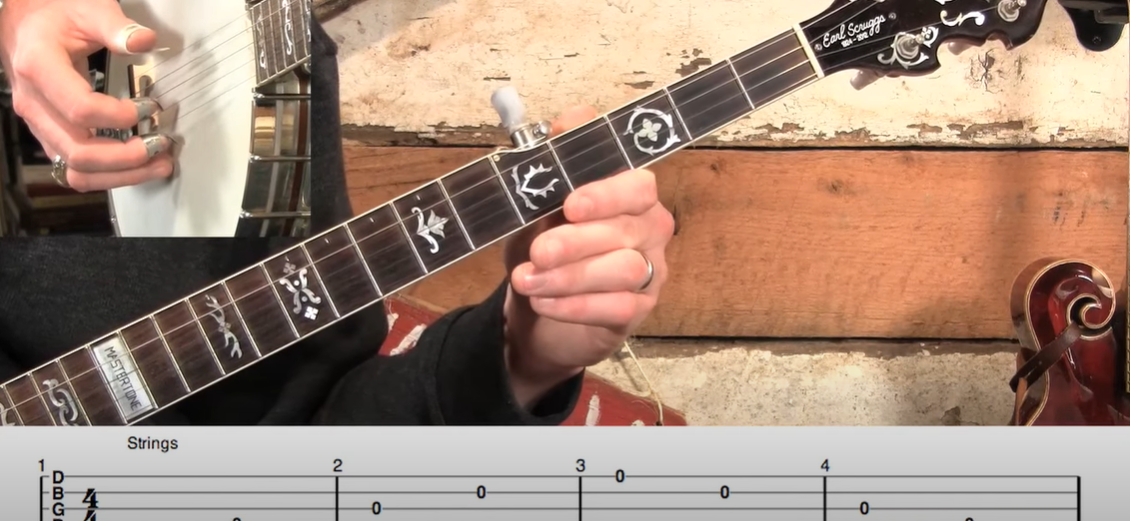
How Does Tab Show Rhythm?
Tablature, a commonly used notation system for guitar, communicates rhythm through a combination of note spacing and specific symbols. The spacing between notes indicates the relative duration, with closer notes played faster and further-apart notes played slower. However, it’s important to note that this can vary depending on the song and the style of the tab.
Symbols such as forward slashes (/) and backward slashes (\\) are often used to indicate slides and bends in the music. These techniques add expressiveness to the guitar playing. Additionally, hammer-ons and pull-offs, represented by the letters “H” and “P” respectively, are commonly used to indicate certain finger movements on the fretboard.
In addition to these symbols, tablature may also incorporate standard rhythmic notation symbols such as whole, half, quarter, and eighth notes. These symbols provide a sense of the relative duration of each note. However, in the absence of these symbols, a player must rely on their familiarity with the song to understand the rhythm.
It’s important to note that interpreting rhythm in tablature can be challenging, especially for beginners. To better grasp the overall rhythm and timing, it’s always beneficial to listen to the song while following along with the tab. This helps to develop a better understanding of how the notes align with the music. So, keep practicing, and with time, you’ll become more comfortable with reading and interpreting tablature rhythm.[1]
Reading Tab Notation
An essential and fundamental component of reading banjo tabs is gaining a thorough understanding of the tab notation system. In this system, each number displayed on a line corresponds to a specific fret that needs to be pressed on the corresponding string. For instance, if you come across a ‘3’ on the second line from the top, it signifies that you should press down the second string at the third fret. Additionally, a series of numbers vertically aligned represents a chord, indicating that all the specified notes within that chord should be played simultaneously. It is important to note that the numbers are read from left to right, symbolizing the sequence of notes to be played.
In addition to numbers, various symbols are also utilized to denote and convey specific techniques used in banjo playing. A forward slash (/) signifies a slide up to a higher note on the fretboard, while a backward slash (\\) denotes a slide down to a lower note. A caret (^) is employed to represent a bend, which involves bending the string to alter its pitch. Furthermore, an ‘H’ or ‘P’ indicates a hammer-on or pull-off technique respectively, which involves rapidly transitioning from one note to another without plucking the string again. Other common symbols that you may encounter include ‘T’ for thumb, ‘M’ for middle finger, and ‘I’ for index finger. These symbols serve as guides for the fingerpicking technique.
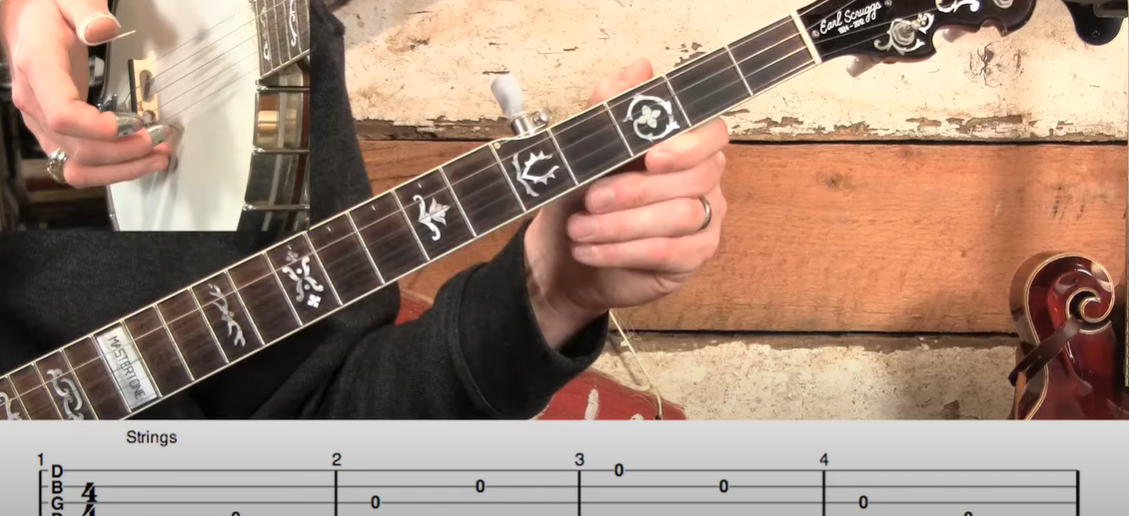
Lastly, it is worth mentioning that sometimes, you may come across the lyrics of the song written beneath the tablature. This can serve as a helpful reference for rhythm and timing, especially when you are already familiar with the song. By combining the lyrics with the tablature, you gain a comprehensive understanding of the song’s structure and can better synchronize your playing. It is important to remember that learning to read banjo tabs is akin to acquiring a new language. Initially, it may take time and practice to become proficient, but with consistent effort and dedication, it will gradually become second nature to you.[1]
Plucking and Strumming Notes
In banjo playing, the techniques of plucking and strumming are not only crucial but also fascinating for creating the unique, resonant sound that defines this remarkable instrument.
When it comes to plucking, it involves using your nimble fingers to pull at individual strings, skillfully producing distinct notes that fill the air with a melodic charm. This technique proves to be particularly valuable when reading tabs, as each number represents a single note waiting to be plucked on a specific string. The precision required in plucking allows you to explore the full range of the banjo and unleash its true potential.
On the other hand, strumming takes us on a different musical journey by virtue of sweeping our fingers across multiple strings. This technique allows us to create rich chords or a cluster of notes that harmoniously blend together, resonating with an enchanting depth. In tablature, the vertical alignment of numbers signifies a chord, indicating that strumming is the way to go. It’s a delightful technique that adds a captivating dimension to the banjo’s sound.
Remember, mastering these techniques is a journey worth embarking on as it greatly enhances your ability to breathe life into the music found in banjo tabs. Just like any other element of music, practice is the key that unlocks the doors of mastery. Take the time to immerse yourself in the world of plucking and strumming, and soon enough, you’ll find yourself playing your favorite tunes with unparalleled ease and confidence, leaving a trail of joy in your wake.[1]
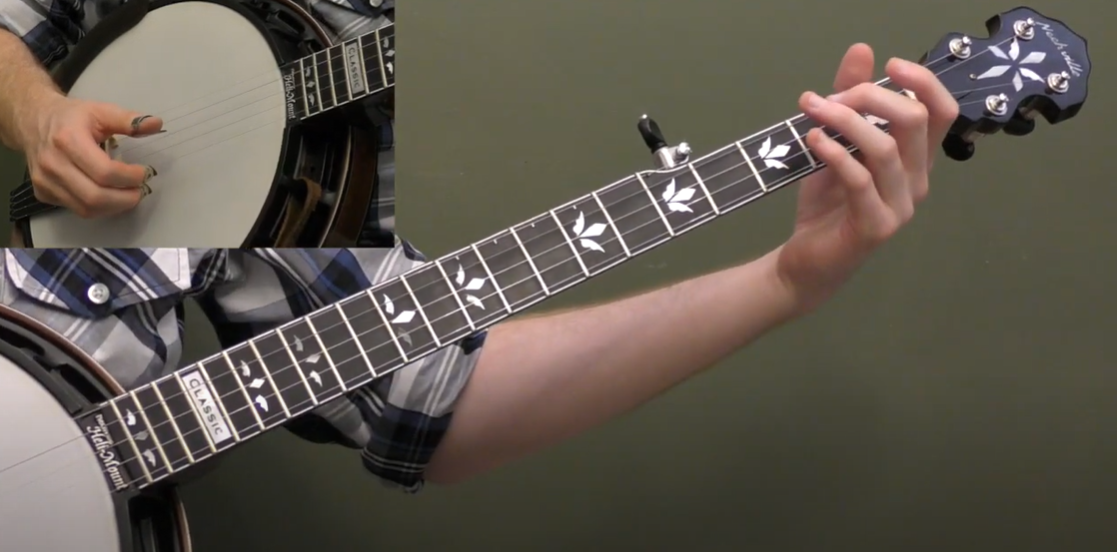
Playing Chords and Keys
Banjo tabs are also effective in communicating chords and keys. A chord, in music, is a group of notes that are played together and create a harmonious sound. In banjo tabs, a chord is represented by numbers that are vertically aligned. These numbers should be played together on the respective strings to create the chord sound.
As for the keys, they set the tonal foundation of a song. Each key consists of a set of chords that sound good together, and these chords form the backbone of the song structure. On a banjo tab, the key is not directly indicated. However, by recognizing the chords and the patterns in which they occur, you can often identify the key.
When playing chords, strumming is the technique typically used, where you sweep your fingers across the strings. It’s important to ensure all the strings are played evenly and at the same volume, to create a harmonious sound.
As you become more proficient in reading and playing banjo tabs, you’ll develop a deeper understanding of chords and keys. This knowledge will enable you to interpret the music more accurately and add your own creative touches to your banjo playing. Remember, practice is the key to mastery. The more you expose yourself to different songs and their corresponding tabs, the better you’ll become at identifying chords and keys, and this will greatly enhance your overall musicality.[2]
Playing Special Characters
In banjo tabs, you’ll often come across special characters that are used to convey unique musical elements and techniques, adding depth and intricacy to the music. These special characters play a crucial role in enriching the melody and rhythm, allowing the banjo player to create a more expressive and captivating performance.
For example, the tilde (~) symbol is frequently used to represent vibrato, a technique that involves a regular pulsating change of pitch. By incorporating vibrato, the banjo player can infuse the music with a beautiful and shimmering quality, enhancing its overall richness.
Additionally, you may encounter symbols like a star (*) or an ‘x’, which indicate a muted note or a percussive hit on the banjo. These symbols add a rhythmic accent to the music, creating a dynamic and lively effect that keeps the listener engaged.
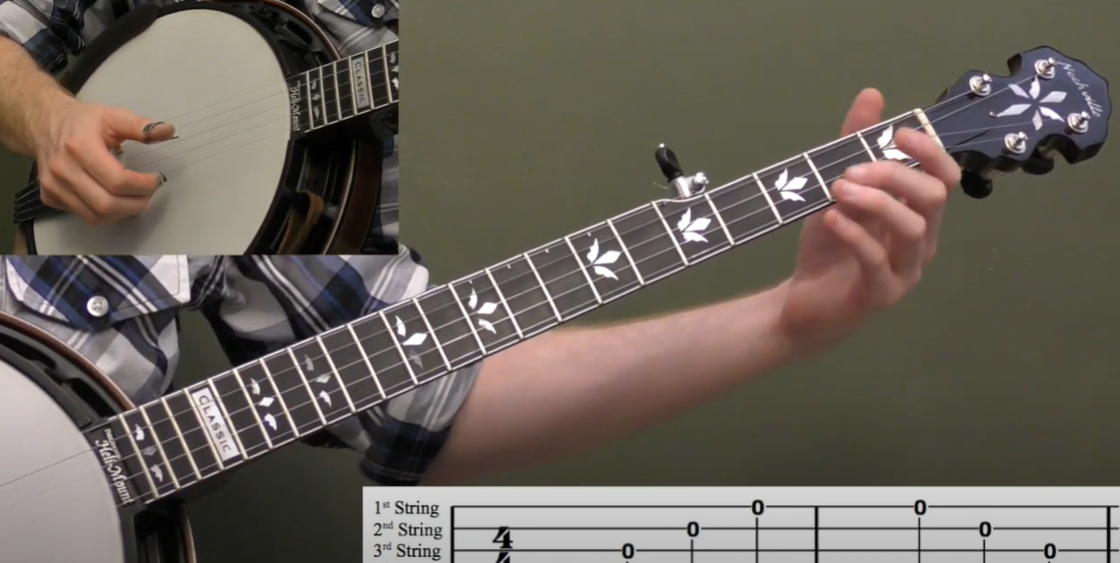
Furthermore, other symbols such as the plus (+) sign can signify a harmonic, which is produced by lightly touching a string at a specific point. This technique creates a bell-like sound, adding a touch of ethereal beauty to the music.
In some instances, you may notice brackets or circles around numbers in banjo tabs. These symbols are typically used to indicate variations in dynamics, instructing the player to play the note louder or softer. By emphasizing the dynamics, the banjo player can effectively convey the intended mood and expression of the music.
Remember, mastering these special characters and techniques requires practice and patience. By dedicating time to honing your skills, you’ll be able to unlock the full potential of your banjo playing and create truly captivating music.[2]
FAQ
How do you read banjo tab music?
Reading banjo tab music involves an intricate understanding of various elements, from the fundamental structure of the tab to the nuanced symbols that denote unique playing techniques. A banjo tab or tablature is a specialized form of musical notation that serves as a guide for the player, indicating where to place their fingers on the fretboard. Unlike traditional music notation that represents the pitches to be played, a banjo tab focuses on finger placement.
Each line in a banjo tab corresponds to a specific string on the instrument, with the top line representing the thinnest and highest pitched string, and the bottom line representing the thickest and lowest pitched string. Numbers placed on these lines indicate the frets to be fingered. For example, a ‘0’ denotes an open string played without any finger pressing on it, while a ‘1’ points to the first fret, ‘2’ to the second fret, and so on.
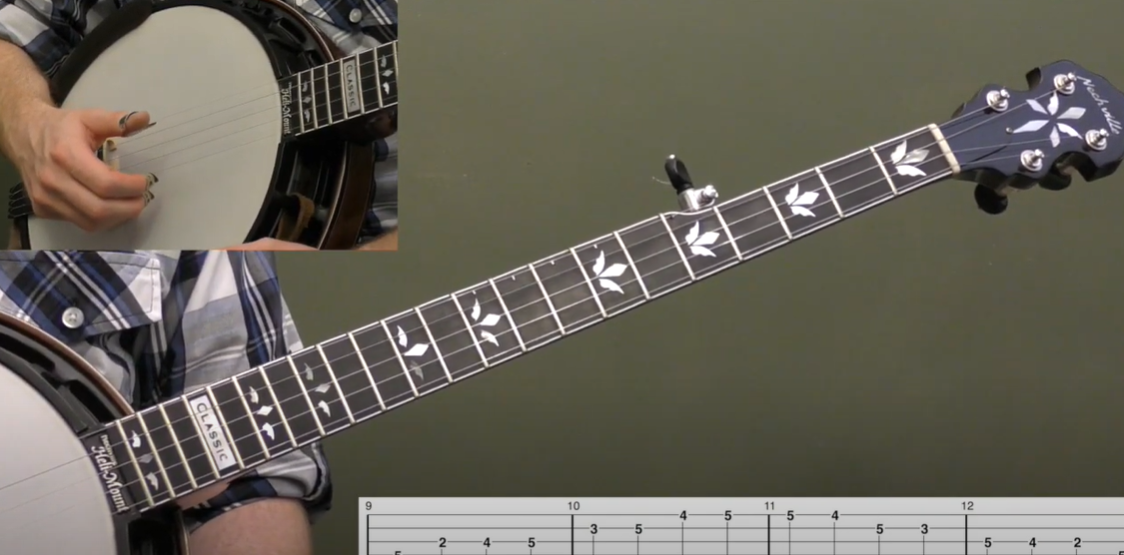
When you encounter numbers stacked vertically, it signifies playing those notes simultaneously, forming a chord. As you read from left to right, you play the notes in sequence, creating a melodic progression.
Special characters are utilized in banjo tablature to indicate specific playing techniques such as slides, bends, hammer-ons, pull-offs, and others. For instance, a forward slash (/) suggests a slide up to a higher note, while a backward slash (\\) signifies a slide down to a lower note.
Understanding the rhythm and timing in a banjo tab can present a challenge since tabs usually do not explicitly convey this information. However, with experience and a growing familiarity with the song, you can intuitively grasp the rhythm and timing.
It is important to emphasize that regular practice is key to mastering banjo tab reading. Regularly engaging with tabs and playing along will enhance your proficiency, enabling you to effortlessly pick up your banjo and play any song from its tab with confidence and ease.
What do the numbers on banjo tabs mean?
The numbers on a banjo tab serve as a visual representation of the frets that need to be fingered on the banjo’s fretboard. Each number corresponds to a specific fret, acting as a guide for the player to accurately place their fingers. For instance, a ‘0’ denotes an open string, indicating that the string should be played without pressing it against any fret. Similarly, a ‘1’ represents the first fret, ‘2’ the second fret, and so on, helping the player navigate the banjo’s fingerboard.
When multiple numbers are stacked vertically, they indicate that those frets should be played simultaneously, creating harmonious chords that add depth and richness to the music. Reading horizontally from left to right, the numbers on the tab represent the sequence of notes to be played, effectively mapping out the melody of the song. Thus, the numbers on banjo tabs act as a roadmap, guiding the player through the intricacies of the music.
While understanding the basics of reading banjo tabs is crucial, it is through consistent practice that one can truly master the ability to translate these numbers into beautiful music. So, grab your banjo, dive into the world of tablature, and let your fingers dance across the frets, creating melodies that resonate with joy and passion.
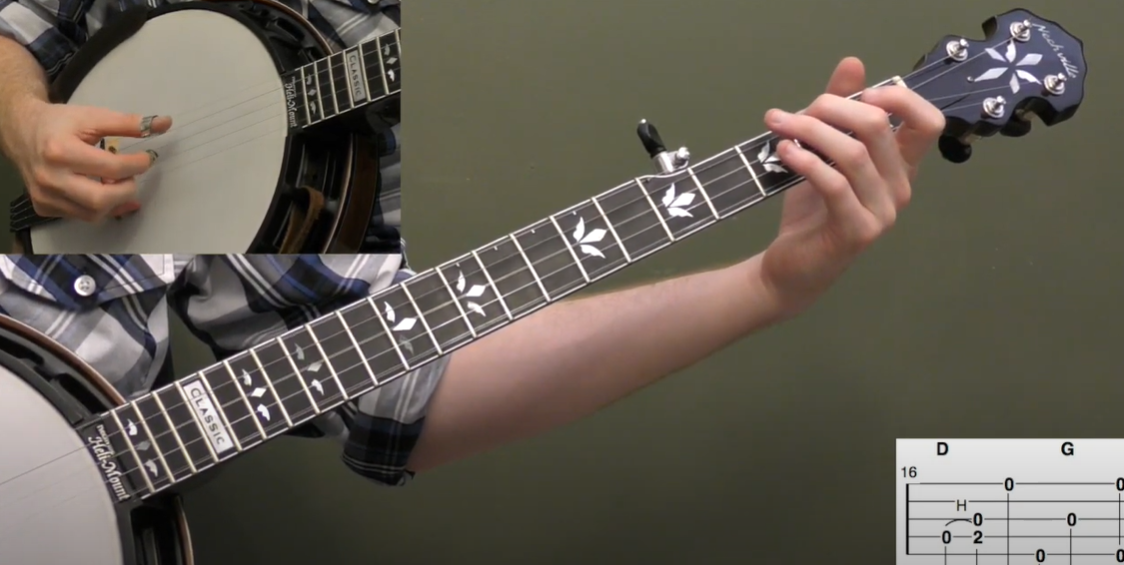
What does M mean in the banjo tab?
In the context of banjo tabs, the letter ‘M’ typically stands for ‘mute’ or ‘muted’. When you see an ‘M’ above or below a note in a tab, it implies you should mute that particular string while playing the note. A muted string is not allowed to resonate or ring freely. This is achieved by lightly touching the string without pressing it down onto a fret, and then striking it. It results in a ‘thud’ or ‘chuck’ sound rather than the string’s usual musical tone. Muting techniques add percussive elements to the banjo’s sound and are often used to emphasize the rhythm and create variety within a piece.
Mastering the art of muting requires practice and precision. It involves finding the right amount of pressure to apply to the string, ensuring it is not fully pressed down onto a fret. Additionally, the timing of the mute is crucial, as it should be synchronized with the plucking or strumming of the string.
The ‘M’ mute indication in banjo tabs opens up a world of possibilities for creativity and expression. By incorporating muted notes into your playing, you can introduce subtle accents, syncopation, and rhythmic variations. Experimenting with different muting techniques and exploring how they interact with other playing techniques will help you develop your own unique banjo style.
So, next time you come across the ‘M’ symbol in banjo tabs, embrace it as an opportunity to enhance your playing. Emphasize the rhythm, add texture, and create captivating banjo melodies with the art of muting. With practice and patience, you’ll be able to execute the ‘M’ mute indication effortlessly, elevating your banjo playing to new heights.
What is the P in the banjo tab?
In banjo tablature, the letter ‘P’ typically represents the technique known as ‘pull-off’. A pull-off is an integral part of banjo playing that allows for seamless transitions between notes. When executing a pull-off, a banjo player plucks a string while simultaneously releasing one of their fretting fingers from a higher note, resulting in a lower note being heard. This technique creates a beautiful melodic effect, producing multiple musical tones with a single pluck of the string. It is often employed to infuse the music with a sense of fluidity and grace.
When reading banjo tablature, the presence of a ‘P’ instructs the player to perform a pull-off from the previously indicated fretted note to the note that follows. This enables the banjo player to achieve a smooth and connected sound between the two notes. It is worth noting that mastering the pull-off technique requires dedicated practice and patience, as it involves precise finger coordination and control.
By incorporating pull-offs into their banjo playing, musicians can enhance the expressiveness and versatility of their performances. The pull-off technique adds depth and complexity to banjo melodies, allowing players to create intricate and captivating musical arrangements. So, for aspiring banjo enthusiasts, practicing and honing the pull-off technique can unlock a world of possibilities in banjo playing.
How do you play F on a banjo?
Playing the F chord on a banjo involves pressing down on the correct frets on the right strings. Here are the steps to play the F chord:
- Place your index finger on the 2nd string at the first fret, which is the B string.
- Put your middle finger on the 3rd string at the second fret, which is the G string.
- Your ring finger goes on the 4th string at the third fret, which is the D string.
Ensure each finger is pressing down firmly to create a clear and resonant sound. It’s important to find the right balance between applying enough pressure to produce a clean note, but not too much pressure that it causes discomfort or mutes the string.
Once your fingers are in position, strum all the strings together to play the chord. This will create a rich and full sound unique to the F chord on the banjo.
As with any new chord, it may take some practice to position your fingers quickly and accurately. Take your time to familiarize yourself with the finger placement and the sound of the chord. Experiment with the pressure and position of your fingers until you achieve the desired sound.
Remember to keep practicing consistently, and soon the F chord will become second nature to you. With time and dedication, you’ll be able to effortlessly incorporate the F chord into your banjo playing repertoire, adding depth and variety to your music.
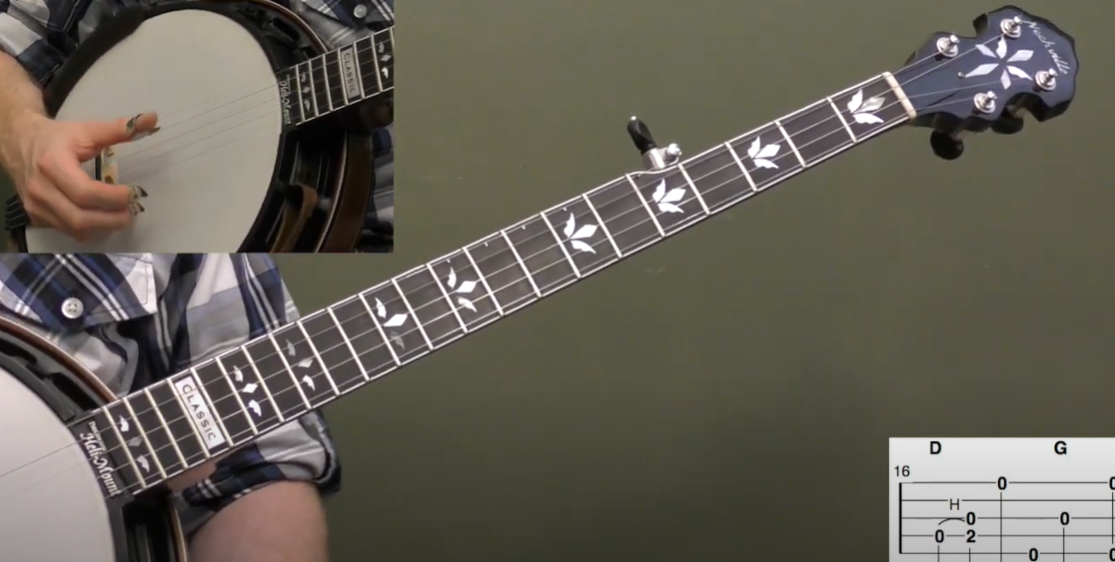
How do you play C on a banjo?
Playing the C chord on a banjo requires proper finger placement on the correct frets. Here are the detailed steps to play the C chord effectively:
- Start by positioning your banjo correctly, ensuring it is comfortably resting against your body.
- Place your index finger on the 2nd string at the first fret. Make sure to position your finger close to the fret wire, allowing for a clean sound when you strum.
- Next, position your middle finger on the 4th string at the second fret. Again, place your finger close to the fret wire to avoid any buzzing or muffled notes.
- As you position your fingers, keep your hand relaxed and maintain a slight curve in your fingers. This will help with accuracy and ease of playing.
- Now, press down firmly on the strings with your fingertips. Apply enough pressure so that each string is held down against the fretboard, but be mindful not to press too hard, as this can cause the strings to go out of tune.
- Once your fingers are in position and applying the right amount of pressure, strum all the strings together to produce the C chord. Strive for a clear and resonant sound.
- Remember, learning a new chord takes practice and patience. Spend some time practicing the finger placement and strumming technique for the C chord. With consistent practice, your comfort and speed will improve, and changing to the C chord will become seamless and instinctual.
By following these detailed steps, you’ll be on your way to mastering the C chord on the banjo.
Useful Video: How To Read Banjo Tabs!
Conclusion
Reading and understanding banjo tabs is not only a crucial skill for any banjo player, but it also offers a simple and visually intuitive way to learn new music. The symbols and numbers present in a tab serve as a comprehensive guide, providing information about finger placement, various techniques, and the sequence of notes. Although it may not indicate the rhythm directly, each tab symbol holds its own unique significance in shaping the melody.
From the simple open string represented by a ‘0’ to the more intricate techniques denoted by symbols like ‘M’ for mute or ‘P’ for pull-off, every element plays a vital role in the overall musical composition. The journey to mastering banjo playing involves continuous practice and patience. Even seemingly complex chord formations such as F and C, which may appear daunting at first, will gradually become second nature over time.
Ultimately, the ability to read banjo tabs opens up a vast repertoire of music, allowing you to delve into a world of melodies and rhythms. It not only brings joy to your own banjo playing but also enables you to share the sheer pleasure of music with others. So, dive into the enchanting realm of banjo tabs and experience the joy of playing this unique instrument to its fullest.
References:
- https://jofflowson.com/how-to-read-banjo-tablature/
- https://blog.deeringbanjos.com/how-to-read-banjo-tab




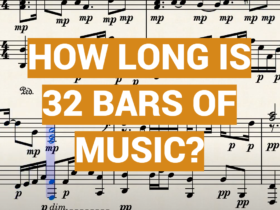

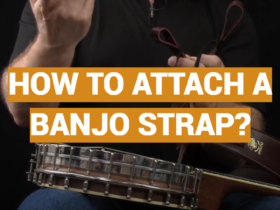
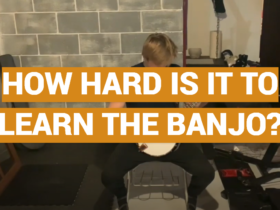

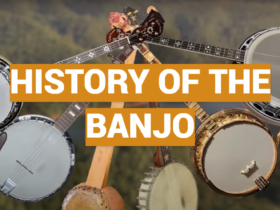
Leave a Reply